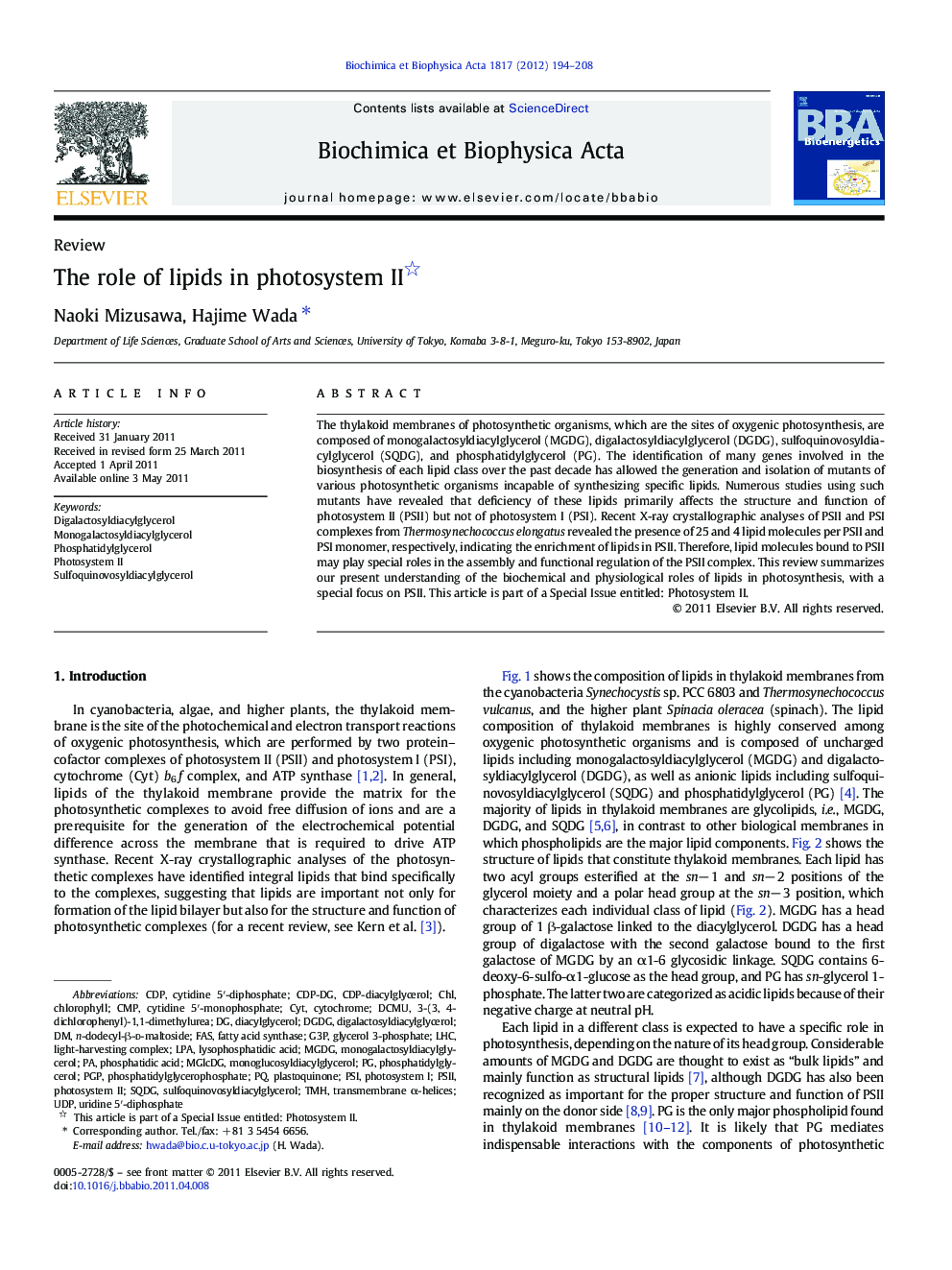| کد مقاله | کد نشریه | سال انتشار | مقاله انگلیسی | نسخه تمام متن |
|---|---|---|---|---|
| 1942349 | 1052607 | 2012 | 15 صفحه PDF | دانلود رایگان |

The thylakoid membranes of photosynthetic organisms, which are the sites of oxygenic photosynthesis, are composed of monogalactosyldiacylglycerol (MGDG), digalactosyldiacylglycerol (DGDG), sulfoquinovosyldiacylglycerol (SQDG), and phosphatidylglycerol (PG). The identification of many genes involved in the biosynthesis of each lipid class over the past decade has allowed the generation and isolation of mutants of various photosynthetic organisms incapable of synthesizing specific lipids. Numerous studies using such mutants have revealed that deficiency of these lipids primarily affects the structure and function of photosystem II (PSII) but not of photosystem I (PSI). Recent X-ray crystallographic analyses of PSII and PSI complexes from Thermosynechococcus elongatus revealed the presence of 25 and 4 lipid molecules per PSII and PSI monomer, respectively, indicating the enrichment of lipids in PSII. Therefore, lipid molecules bound to PSII may play special roles in the assembly and functional regulation of the PSII complex. This review summarizes our present understanding of the biochemical and physiological roles of lipids in photosynthesis, with a special focus on PSII. This article is part of a Special Issue entitled: Photosystem II.
Research highlights
► Lipids play special roles in the assembly and function of PSII complex.
► PG and SQDG are required for structural integrity of the QB binding site.
► DGDG and PG are involved in the binding of extrinsic proteins to PSII core complex.
► Biochemical and physiological roles of lipids in PSII are summarized in this review.
Journal: Biochimica et Biophysica Acta (BBA) - Bioenergetics - Volume 1817, Issue 1, January 2012, Pages 194–208